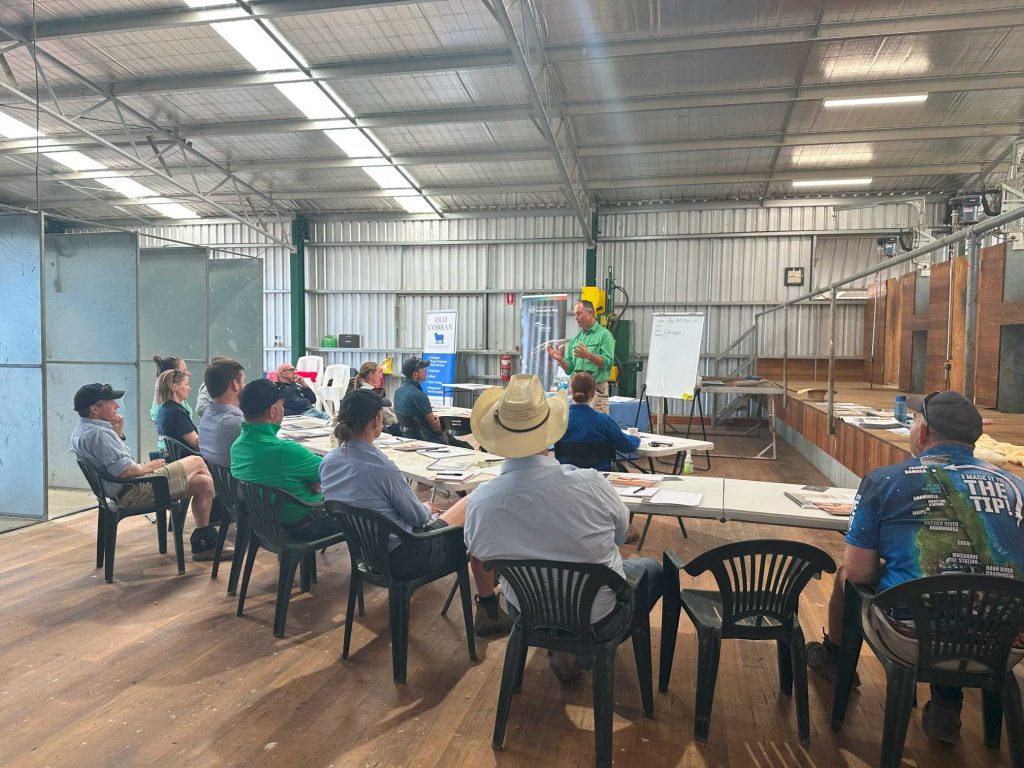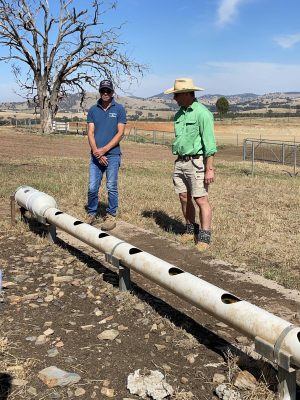Strategic Feed Budgeting for Sheep Containment
Ewes and Lambs Workshop - Mullengandra NSW
Presented by Jim Meckiff from JM Livestock, the 3rd workshop in our FDF Saving our Soils – Stock Containment project saw us venture down to Old Cobran Poll Merino Stud, Mullengandra. Our host was local producer Matthew Martin.
We started our morning in the shearing shed covering off on key components and considerations when deciding to build and utilise stock containment areas during dry periods. This included highlighting the purpose containment areas as a temporary, proactive management tools to protect our soils and pastures, and maintain livestock production and health during drought. After discussing the pros and cons of stock containment, site selection, pen design and troughing decisions to suit your mobs we took the opportunity to check our Matt’s containment area which he established in 2018. Matt’s site walk demonstrated a great combination of features contributing to an effective stock containment area. Key features included close proximity to feedstores, yards, and easy, all weather access via laneways, feed troughing extending along the outside of the containment pens to remove the need to feed in pen, and basic, but effective PVC water troughing designed to prevent dust and ensure clean cool water. For Matt he utilises these areas to protect his pastures during the summer months and through the autumn break to ensure that ground cover is preserved drying dry months and that pastures have quicker recovery post-rain.

After a great site walk we returned to the shed to touch on understanding the energy requirements of your flock across your annual management cycle and how this can be timed when utilising stock containment areas. When sitting down to plan when, what and how to feed your livestock Jim emphasised the importance of knowing the standard reference weight of your mobs and knowing what the energy requirements of your stock will be based on where they are in your production cycle when you are considering feeding. For example, knowing in your production cycle when ewes will be entering different stages of pregnancy, or if they are single or twin bearing ewes will highlight how much their energy requirement will change. A second key takeaway is once you know how much and when you need to feed, the next important thing is ensuring the feed you are investing in is quality! It’s is more important than ever to be purchasing feed that is fit for purpose and ensuring you’re getting feed tested to know you’re getting the bang for your buck.

A big thank you goes to Jim Meckiff for coming out and presenting Thursday’s workshop, as it does to Matt for hosting us, answering all of our questions and showing us around his awesome containment area.
Resources
Australian Wool Innovation, Managing Sheep in Droughtlots: A Best Practice Guide (2017).
https://www.wool.com/globalassets/wool/land/drought-resources/accordion-1/2017-managing-sheep-in-droughtlots.pdf
Australian Wool Innovation, Releasing Sheep from Containment (2019).
https://www.wool.com/globalassets/wool/land/drought-resources/accordion-3/releasing-sheep-from-containment-feeding-v3.pdf
Lifetime Wool, Feed Tables for Dry and Drought
https://www.wool.com/globalassets/wool/other/lifetime-wool/grower-resources/feed-tables-for-dry-and-droughts.pdf
This project is lead by the NSW Local Land Services, in partnership with The Southern NSW Drought Innovation Hub, Holbrook Landcare Network, Irrigated Cropping Council, FarmLink Research, Central West Farming Systems, Southern Growers, Riverine Plains, Soil Knowledge Network, and Charles Sturt University.
This Project is funded through the Federal Government’s Future Drought Fund (FDF) Drought Resilient Soils and Landscapes (DRSL) Grants Program.









